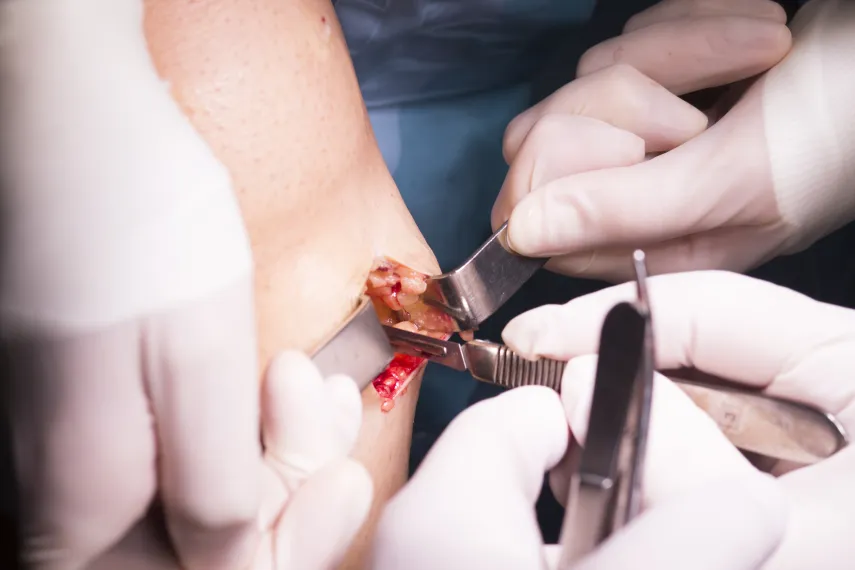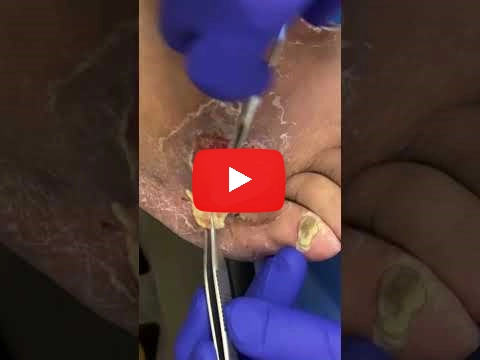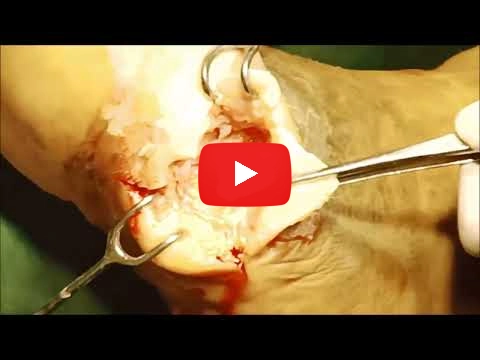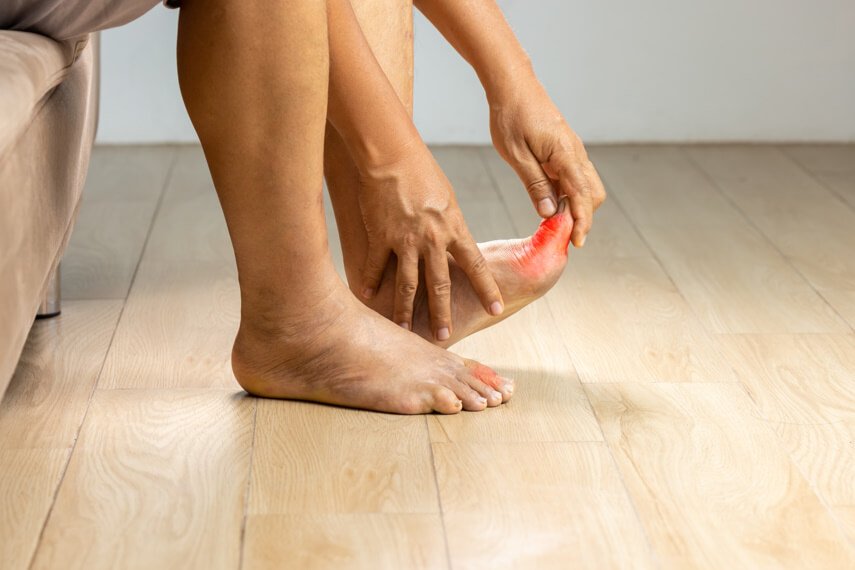What Is Wound Debridement and When Is It Necessary?
Wounds are a natural part of life, from small cuts to severe wounds. Wound care is imperative to avoid complications and to initiate the healing process. One key component of wound care is debridement surgery for wounds, a procedure usually done by Wound Care Specialists in Surat. But what is debridement, and when is it required? At Surat Diabetic Foot and Ulcer Clinic, we give importance to quality patient care so that our patients are provided with the best treatments for their wounds.
What Is Wound Debridement?
Debridement is the process of removing dead, damaged, or infected tissue from a wound to encourage healing. It is a crucial process because non-viable tissues can hinder the body's natural healing and cause infection. Debridement removes these tissues, making the wound bed clean for the growth of healthy tissue and minimising the possible complications. For those suffering from chronic wounds or chronic diseases such as diabetes, prompt debridement must be performed to avoid grave consequences. We deal with multiple methods of debridement suited for every patient's requirement at Surat Diabetic Foot and Ulcer Clinic.
Types of Wound Debridement
There are several methods of debridement, each chosen based on the wound's characteristics and the patient's overall health:
- Autolytic Debridement: This method utilises the body's enzymes and moisture to naturally break down dead tissue. Dressings that maintain a moist environment, such as hydrogels or hydrocolloids, are applied to the wound, allowing the body to heal itself. This technique is gentle and suitable for non-infected wounds but may take longer to achieve desired results.
- Enzymatic Debridement: In this approach, topical enzymes are applied to the wound to chemically dissolve necrotic tissue. It's effective for patients who cannot tolerate more aggressive methods and is often used in conjunction with other debridement techniques.
- Mechanical Debridement: This involves the physical removal of dead tissue through methods like wet-to-dry dressings or wound irrigation. While effective, it can be painful and may also remove healthy tissue, so it's essential to have it performed by experienced professionals.
- Sharp or Surgical Debridement: Performed by healthcare professionals, this method uses surgical instruments to quickly and precisely remove dead tissue. It's particularly useful for large wounds or those with significant necrotic tissue. At Surat Diabetic Foot and Ulcer Clinic, our specialists are adept at performing Surgical Debridement Procedures with utmost care.
- Biological Debridement: Also known as maggot therapy, this method uses sterile larvae to consume dead tissue, leaving healthy tissue unharmed. It's less commonly used but can be effective in certain situations.
When Is Wound Debridement Necessary?
Debridement is essential in various scenarios to ensure optimal healing:
- Presence of Necrotic Tissue: Dead or necrotic tissue can serve as a breeding ground for bacteria, leading to infections. Removing this tissue reduces the risk of complications.
- Chronic Non-Healing Wounds: Wounds that fail to heal over time may have biofilms or dead tissue impeding the healing process. Debridement can jumpstart the healing by creating a conducive environment.
- Signs of Infection: If a wound shows signs of infection, such as increased redness, warmth, swelling, or pus, debridement may be necessary to remove infected tissue and control the spread.
- Foreign Material: Wounds contaminated with debris or foreign objects require debridement to prevent infection and promote healing.
At Surat Diabetic Foot and Ulcer Clinic, our experts assess each wound meticulously to determine the necessity and appropriate method of debridement, ensuring personalised care for every patient.
Wound Debridement for Diabetic Foot Ulcers
Diabetics are at increased risk of developing foot ulcers because of neuropathy and impaired circulation. The ulcers become chronic and are likely to get infected. Diabetic Foot Ulcer Treatment usually comprises debridement on a regular basis to clean off dead tissue and decrease bacterial load. This early intervention prevents the ulcer from worsening and reduces the risk of serious complications, such as amputations. Our clinic is dedicated to total care for diabetic foot disease, providing individualised treatments to facilitate healing and enhance quality of life.
Recovery and Aftercare Post-Debridement
Post-debridement care is crucial for successful healing:
- Wound Care: Keeping the wound clean and moist is essential. Our team provides guidance on appropriate dressings and care routines to prevent infections.
- Monitoring for Infection: Regular check-ups are vital to detect any signs of infection early. Symptoms like increased pain, redness, or discharge should prompt immediate medical attention.
- Managing Underlying Conditions: For patients with diabetes, controlling blood sugar levels is imperative to facilitate healing. We offer comprehensive support to manage diabetes effectively.
- Nutrition and Lifestyle: A balanced diet rich in vitamins and minerals supports tissue repair. Avoiding smoking and staying active, as advised, can also enhance recovery.
Our clinic is committed to providing continuous support throughout the healing journey, ensuring that patients receive holistic care tailored to their individual needs.
Conclusion
Wound debridement is a critical intervention in the treatment of all types of wounds, particularly in patients with chronic conditions such as diabetes. Knowledge of its significance, the various techniques used, and the need for early intervention can greatly influence healing. Surat Diabetic Foot and Ulcer Clinic is committed to providing professional care, applying the most current methods of wound management to help our patients attain the best
FAQs
What are the 4 types of debridement?
There are actually five main types of debridement, but the four most commonly used are:
- Autolytic debridement – Uses the body’s natural enzymes to break down dead tissue.
- Enzymatic debridement – Involves applying enzyme-based ointments to dissolve necrotic tissue.
- Mechanical debridement – Utilises wet-to-dry dressings, wound irrigation, or hydrotherapy to remove dead tissue.
- Surgical debridement – A doctor uses scalpels or other instruments to precisely cut away necrotic tissue.
What is Wound Debridement Procedure?
A debridement procedure involves removing dead, damaged, or infected tissue from a wound to promote healing. The method used depends on the severity of the wound and the patient’s condition. The procedure may be performed using surgical instruments, special dressings, enzymatic creams, or biological methods like maggot therapy.
How painful is wound debridement?
The level of pain varies depending on the type of debridement used. Autolytic and enzymatic debridement are usually painless, while mechanical and surgical debridement can cause discomfort. Doctors often use local anaesthesia or pain management strategies to minimise pain during the procedure.
Is wound debridement considered major surgery?
Not all debridement procedures are major surgeries. Surgical debridement procedures can be considered a minor or major surgical intervention, depending on the wound's severity. Less invasive debridement methods, such as autolytic and enzymatic debridement, do not require surgery and can often be done in outpatient settings.
What is removed during debridement?
During debridement, necrotic tissue, infected tissue, debris, pus, or foreign material is removed. This process helps reduce the risk of infection, encourages new tissue growth, and speeds up healing.
What is the best treatment for wound debridement?
The best wound debridement treatment depends on the wound type, severity, and patient’s overall health. Surgical debridement procedures are best for severe wounds, while autolytic or enzymatic debridement is preferred for less critical wounds. A healthcare provider will determine the most appropriate method based on individual patient needs.






.jpg)

